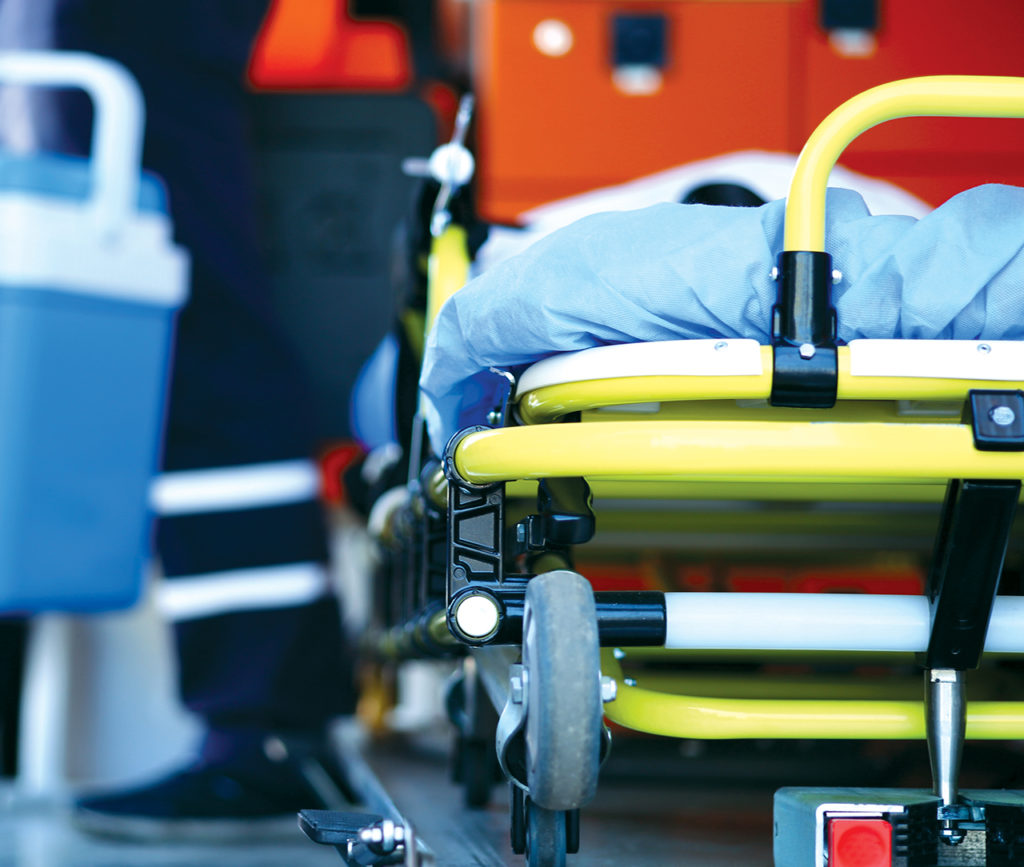About Emergency Preparedness

It’s time to change the way California thinks about disaster response. The COVID-19 pandemic showed that hospitals can quickly mobilize to provide flexible approaches to patient care during a disaster. The state must draw upon these lessons to prepare differently so the next crisis will be less severe. Given California’s size and complexity, the health care disaster response system of the future must be nimble enough to respond to any catastrophe. View more information on hospital disaster preparedness.
Health Care Preparedness and Response Capabilities
The U.S. Department of Health and Human Services (HHS) Office of the Assistant Secretary for Preparedness and Response (ASPR) leads the country in preparing for, responding to, and recovering from the adverse health effects of emergencies and disasters. This is accomplished by supporting the nation’s ability to withstand adversity, strengthening health and emergency response systems, and enhancing national health security.
ASPR TRACIE Webinar on 2017-2022 Health Care Preparedness and Response Capabilities
On January 11, 2017, ASPR TRACIE hosted a webinar on the newly-released 2017-2022 Health Care Preparedness and Response Capabilities. The webinar is archived and available for viewing on the ASPR TRACIE website.
Preparing for the Future of Disaster Health Volunteerism
Participants at the 2017 Disaster Planning Conference discussed potential characteristics of society in the year 2042 and the key resources, tools, and opportunities necessary to support the development of a robust, scalable, and regularly engaged disaster health volunteer workforce prepared for such a future.
Keeping Business Viable After a Disaster
Getting businesses — big or small — back into a community and keeping them viable after a disaster is a cornerstone of recovery. In this audio lecture, Karl Matzke, a Stanford Graduate School of Business alumnus and volunteer first responder, discusses best practices and available resources with Federal Emergency Management Authority Administrator Craig Fugate.
The audio covers available resources for corporations and small to medium-sized businesses to prepare for and protect themselves from the impact of disaster. For a community to maintain a healthy recovery, Fugate asserts that private and public groups must work collaboratively to help stabilize an environment after disaster.
Continuity of Operations Plan Template
Developed by the California Association of Health Facilities, this template is designed to assist long-term care providers in developing an effective continuity of operations plan for emergency scenarios. While this template is designed for long-term care, small and rural hospitals may find the template useful and adaptable.
Business Continuity for Small Hospitals
This presentation addresses the unique needs and resources of small hospitals as they prepare for, respond to, and continue to offer services after a disaster occurs.
The Stafford Act
The Stafford Act encourages the development of comprehensive disaster preparedness assistance plans, programs and capabilities by State and local governments. It also provides grants and other assistance to state and local governments in the development of preparedness plans and procedures.
Business Continuity Planning Suite
This software was created for businesses to create, improve, or update their business continuity plans. The suite is scalable for optimal use by organizations of any size and consists of a business continuity plan (BCP) training, automated BCP and disaster recovery plan generators, and a self-directed exercise for testing an implemented BCP. Businesses can utilize this solution to maintain normal operations and foster resilience during a disruption.
Hospital Continuity Resources
These resources were developed to help hospitals prepare for and manage disruptions while maintaining critical operations.
Continuity 101
Presented by Angela Devlen at Wakefield Brunswick, this workshop aims to educate hospitals on establishing and maintaining a continuity program that will allow the continuation of essential clinical, research, business and administrative operations in the event of natural, technological, man-made or public health emergencies.